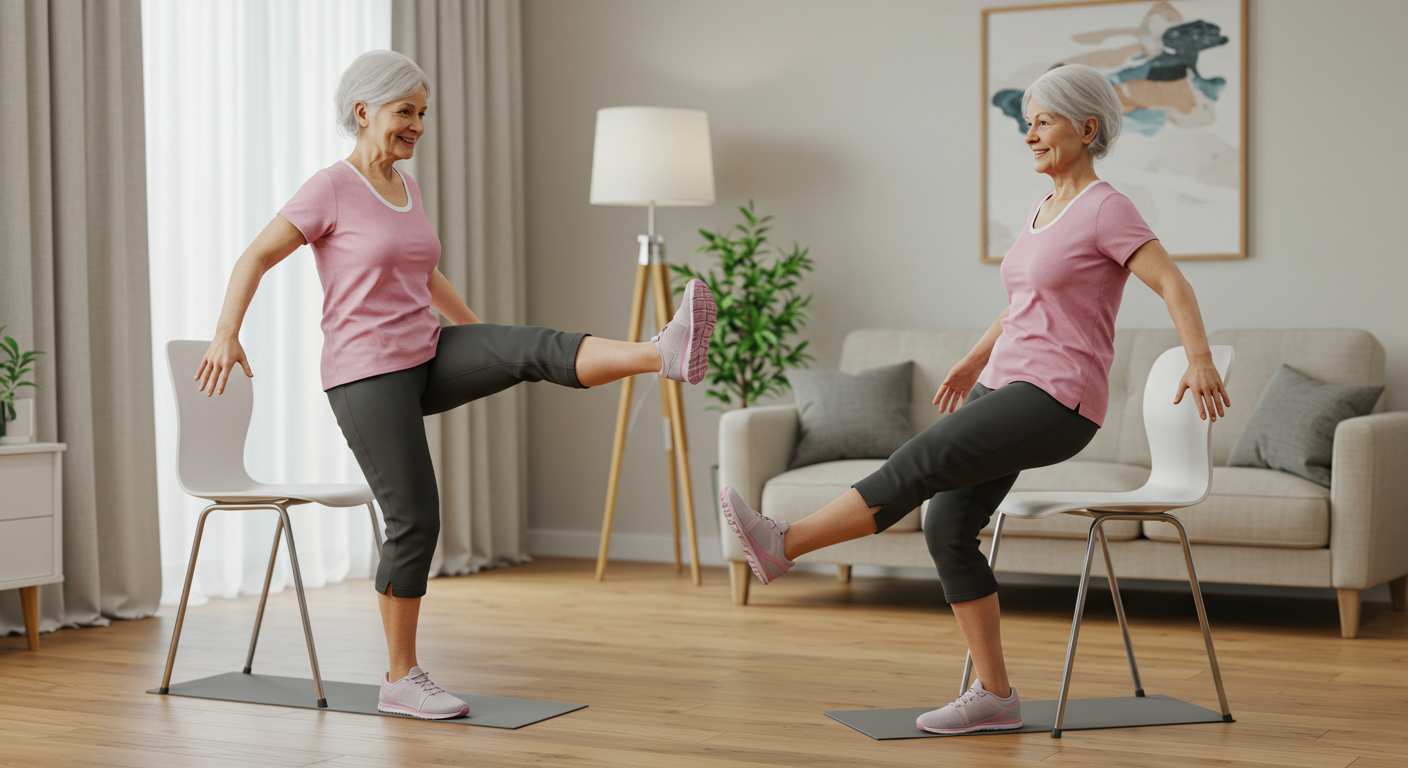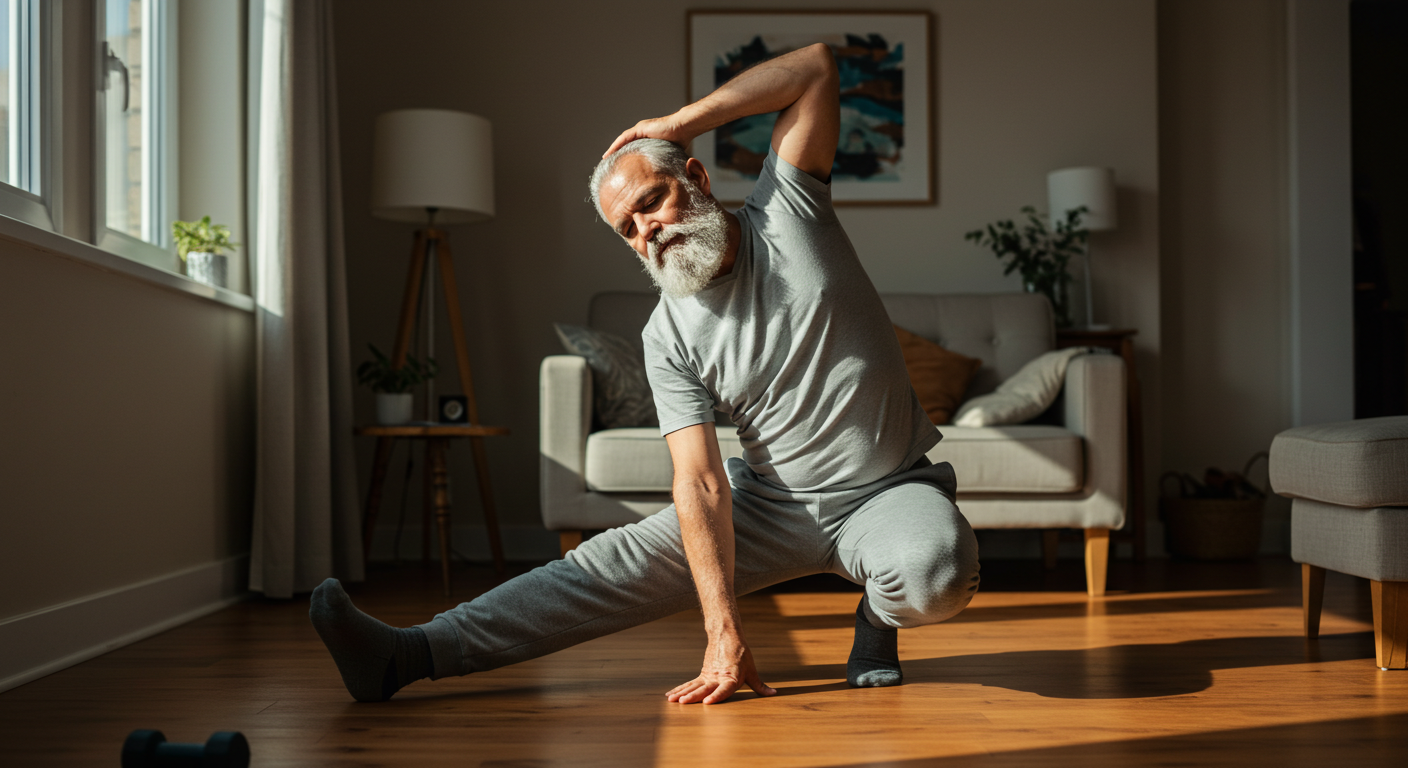Introduction: Why Bother with Stretching?
Have you ever woken up in the morning feeling stiff and aching for a bit more ease in your movements? It’s a common experience, and one that many of us tend to brush aside as a minor inconvenience.
However, what if I told you that making stretching a regular part of your daily routine might significantly boost your physical and mental wellbeing?
Stretching has long been associated with flexibility and athletic performance, but the benefits stretch far beyond these aspects.
As someone who has discovered the transformative power of a regular stretching routine, I am here to share my journey and encourage you to give it a try.
Understanding the Fundamentals
Before diving into stretching, it’s important to understand what it entails. Stretching refers to the practice of elongating muscles to improve elasticity and muscle tone.
There are various types of stretching exercises, each serving different purposes and targeting different muscle groups. To grasp the full potential of stretching, let’s break down the basic components.
| Type of Stretch | Purpose | Example |
|---|---|---|
| Static Stretching | Improves flexibility | Seated toe touch |
| Dynamic Stretching | Enhances range of motion | Leg swings |
| PNF Stretching | Increases muscle length | Hamstring hold-relax |
| Ballistic Stretching | Improves explosiveness | Jump squats |
Understanding these fundamentals can help guide you in developing a routine that matches your personal goals and fitness level.
The Science Behind Stretching

You might wonder why stretching makes such a difference. Well, it all boils down to the physiological response of the body.
Stretching effectively increases blood flow to the muscles, improving circulation. This not only aids in the delivery of essential nutrients to your muscles but also enhances recovery after physical activities.
Additionally, stretching activates the parasympathetic nervous system, which helps in reducing stress levels and improving your mood.
For someone like me, who often struggles with anxiety, incorporating stretching into my routine has become a natural way to alleviate stress.
“Stretching isn’t just about reaching your toes. It’s about pushing your limits, mentally and physically, to touch a part of yourself that craves freedom.”
Starting a Routine: Where Do You Begin?
Beginning a stretching routine can seem daunting, especially if you’re unsure where to start. It’s crucial to ease into it, allowing your body to gradually adapt to the increased demands. Personally, I began with a simple plan targeting major muscle groups, dedicating just 10 to 15 minutes a day. Here’s how you can do it:
1- Focus on large muscle groups like hamstrings, quadriceps, and back muscles.
2- Hold each stretch for at least 15 to 30 seconds to allow the muscle fibers to elongate properly.
3- Breathe deeply during each stretch to facilitate relaxation and enhance oxygen delivery.
4- Gradually increase the duration and intensity of stretches as your flexibility improves.
If you don’t feel comfortable starting alone, watch videos like this:
Overcoming Common Challenges
Like any habit, establishing a stretching routine comes with its challenges. Perhaps the biggest hurdle is consistency.
It’s easy to lose motivation when results aren’t immediately noticeable, but it’s essential to push through the initial phase.
To stay motivated, I found it helpful to set small, achievable goals, such as touching my toes or holding a particular stretch for a longer period.
Another common challenge is discomfort during stretching; however, it’s important to differentiate between discomfort and pain.
If a stretch hurts, it’s a signal to ease off and listen to your body.
The Role of Stretching in Injury Prevention
Stretching plays a critical role in preventing injuries by improving the flexibility of muscles and joints, making them more resilient to stress and strain.
Regular stretching helps in maintaining optimal muscle length-tension relations, which ensures proper muscle coordination. For athletes and fitness enthusiasts, this is particularly important.
In my own experience, sticking to a stretching regimen has minimized my risk of pulling a muscle or straining a ligament, keeping me active and healthy.
Enhancing Athletic Performance
While stretching is beneficial for everyone, its impact on athletic performance is especially notable.
By improving flexibility and range of motion, stretching enables smoother and more effective movements during athletic activities. This results in better performance outcomes.
For runners or those engaged in high-intensity sports, stretching ensures that muscles can handle the demands placed on them without undue stress.
In my own fitness journey, incorporating dynamic stretches into my pre-workout routine has noticeably improved my agility and power output.

The Connection Between Mind and Body
Stretching is not just a physical exercise; it’s a mental one too. By focusing on your breath and embracing the physical sensation of stretching, you promote a mind-body connection that fosters mindfulness.
This mindfulness has been pivotal in my own life, helping me to stay grounded and present.
It serves as a meditative practice that reduces cortisol levels and alleviates stress, contributing to an overall sense of wellbeing.
Adapting Stretching Techniques as You Age
As we age, our flexibility naturally decreases, making stretching an even more critical practice.
Adapting stretching techniques to suit our changing bodies is vital in maintaining mobility and independence.
For older adults, incorporating gentle, consistent stretching can improve balance and prevent falls.
In my experience, stretching has not only maintained my physical prowess but has also helped me to adapt to other physical changes associated with aging, keeping me active and energetic.
Making Stretching a Lifelong Habit
The key to reaping the full benefits of stretching lies in making it a regular part of your life.
Treat stretching as a non-negotiable appointment with yourself, much like you would a doctor’s appointment. Dedicate a suitable time each day when you’re least likely to be interrupted.
Whether it’s a morning routine or a winding down practice in the evening, find a time that aligns with your schedule.
Over time, this practice can transform your daily life, promoting physical health and emotional balance.
Conclusion: Embrace the Art of Stretching
Incorporating a stretching routine into your daily life is a simple yet profound change that can enhance your physical and mental health significantly.
From increasing flexibility and aiding athletic performance to reducing stress and preventing injuries, the benefits are vast and varied.
As someone who has embraced the art of stretching, I can attest to its transformative impact.
I encourage you to embark on this journey and discover how stretching can enrich your life.
FAQ
How much time should I dedicate to stretching daily?
Start with 10-15 minutes daily and adjust as you become more comfortable and flexible.
Is it normal to feel pain while stretching?
Discomfort can be normal, but sharp pain is not. Always listen to your body and ease off if you experience pain.
Can stretching help with back pain?
Yes, specific stretches can alleviate tension and strengthen the muscles supporting your spine.
How long before I see results from stretching?
While some improvements can be noticed within a few weeks, significant flexibility gains can take months.
Does everyone need to stretch?
Yes, stretching is beneficial for maintaining flexibility and mobility for all individuals, regardless of age or fitness level.

